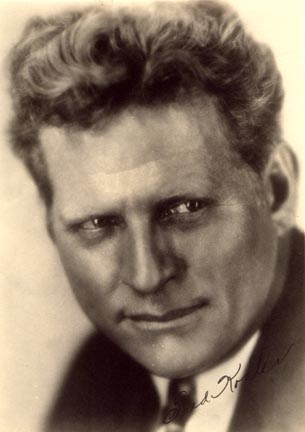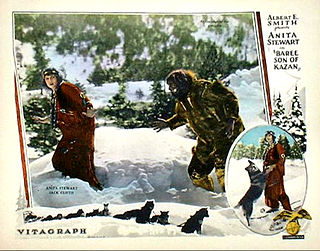
William Lawrence Boyd was an American film actor who is known for portraying the cowboy hero Hopalong Cassidy.

Noah Nicholas Beery was an American actor who appeared in films from 1913 until his death in 1946. He was the older brother of Academy Award-winning actor Wallace Beery as well as the father of prominent character actor Noah Beery Jr. He was billed as either Noah Beery or Noah Beery Sr. depending upon the film.

Tom Tyler was an American actor known for his leading roles in low-budget Western films in the silent and sound eras, and for his portrayal of superhero Captain Marvel in the 1941 serial film The Adventures of Captain Marvel. Tyler also played Kharis in 1940's The Mummy's Hand, a popular Universal Studios monster film.

Tully Marshall was an American character actor. He had nearly a quarter century of theatrical experience before his debut film appearance in 1914 which led to a film career spanning almost three decades.

Jack Perrin was an American actor specializing in Westerns.

John Paterson McGowan was a pioneering Hollywood actor and director and occasionally a screenwriter and producer. McGowan remains the only Australian to have been made a life member of the Screen Directors Guild.

Guinn Terrell Williams Jr. was an American actor who appeared in memorable westerns such as Dodge City (1939), Santa Fe Trail (1940), and The Comancheros (1961). He was nicknamed "Big Boy" as he was 6' 2" and had a muscular build from years of working on ranches and playing semi-pro and professional baseball, and at the height of his movie career was frequently billed above the title simply as Big Boy Williams or as "Big Boy" Guinn Williams on posters and in the film itself.

John Hartford Hoxie was an American rodeo performer and motion-picture actor whose career was most prominent in the silent film era of the 1910s through the 1930s. Hoxie is best recalled for his roles in Westerns and rarely strayed from the genre.

William Reeves Eason, known as B. Reeves Eason, was an American film director, actor and screenwriter. His directorial output was limited mainly to low-budget westerns and action pictures, but it was as a second-unit director and action specialist that he was best known. He was famous for staging spectacular battle scenes in war films and action scenes in large-budget westerns, but he acquired the nickname "Breezy" for his "breezy" attitude towards safety while staging his sequences—during the famous cavalry charge at the end of Charge of the Light Brigade (1936), so many horses were killed or injured so severely that they had to be euthanized that both the public and Hollywood itself were outraged, resulting in the selection of the American Humane Society by the beleaguered studios to provide representatives on the sets of all films using animals to ensure their safety.

Fredrick Louis Kohler was an American actor.

Wheeler Oakman was an American film actor.

Lafayette S. "Lafe" McKee was an American actor who appeared in more than 400 films from 1912 to 1948.

Mack V. Wright was an American actor and film director. Active as a director from 1920 to the late 1940s, he also had an extensive career as an assistant director, second-unit director and production manager. His heyday was in the 1930s, when he directed or co-directed serials for Republic Pictures and made westerns for Monogram Pictures, often with John Wayne. He was also an actor, appearing in his first film in 1914 and his last in 1934, almost all of them westerns.

Leonard Miles "Bud" Osborne was an American film actor. He appeared in more than 600 films and television programs between 1912 and 1963.

James Lew Meehan was an American film actor.

George Cooper Healey was an American actor of the silent film era. Cooper appeared on stage first, then in 210 films between 1911 and 1940. His son George Cooper Jr. (1920–2015) was also an actor who appeared in films from 1947 until 1954.

Jack Curtis was an American actor of the silent era. He appeared in more than 150 films from 1915 to 1950. He was born in San Francisco, California and died in Hollywood, California. Curtis performed on stage and in vaudeville before he began working in films in 1915.

William Beatman Davidson was an American film actor. He appeared in more than 300 films between 1915 and 1947.

William J. Dyer was an American actor of the silent era. He appeared in dozens of films, mostly Westerns and action films, between 1915 and 1933. He was born in Atlanta, Georgia and died in Hollywood, California. He was also credited as William Dyer and Bill Dyer.

Lillian Case Russell, often credited as L. Case Russell, was an American screenwriter during Hollywood's silent era. She was married to actor John Lowell Russell.




















